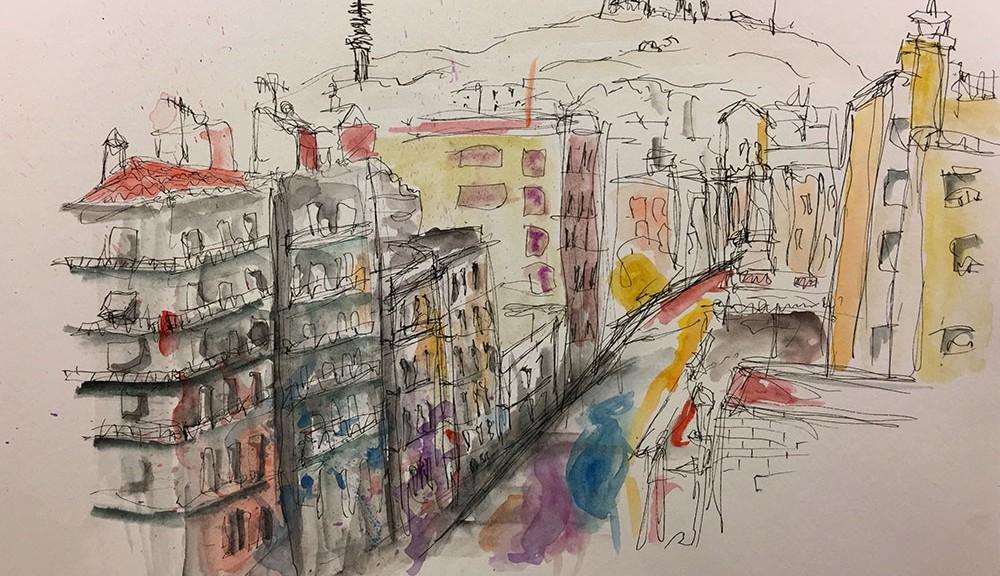Last week our Level 3 students started to explore how ink and water flows on paper as they experimented with various line techniques. Shown above is Fiona’s first study of wonky lines and watercolor from a reference book on urban sketching.







The following two tabs change content below.


Rob Court
Founder and drawing coach at the Scribbles Institute, Rob helps adults and kids learn basic drawing skills for work, school, and enjoyment. He is the author of a number of how-to-draw books.
Latest posts by Rob Court (see all)
- Drawing With Friends - April 11, 2022
- Frozen in Time: Cellphone Users as Models to Draw - April 8, 2022
- Getting Out & Getting Real - June 20, 2021
- Life Lines: Sketching the Unseen World of Movement - June 20, 2021
- The Ups & Downs of Urban Sketching - May 9, 2021
